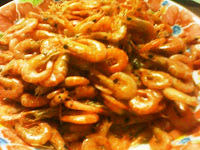 Snowman Building for Dummies!
Snowman Building for Dummies!Making a snowman is an enjoyable and creative experience, as well as a great way to get some fresh air (and nosebleed--do be careful) on an otherwise boring winter day. You'll need a few inches of snow on the ground--a patch of snow won't be enough, gloves or mittens, patience, camera (for photo ops *wink*), and friends to share the fun...Here goes:
1. PLAN. Think about where you'll build it, and how big it's going to be. Check for "packing snow." It should clump together easily and isn't too wet. "Fluffy snow" won't work well.
 2. Shape a handful of snow into a ball, packing it tightly with your hands. Roll the ball along the snowy patch to add more snow. Pack the ball until it's big enough.(Oops...more than a handful). Roll and pack the ball over and over until it is the size you want for the bottom of the snowman's body.
2. Shape a handful of snow into a ball, packing it tightly with your hands. Roll the ball along the snowy patch to add more snow. Pack the ball until it's big enough.(Oops...more than a handful). Roll and pack the ball over and over until it is the size you want for the bottom of the snowman's body. EHow's Tip: Stack snowballs up from largest to smallest. Pack some extra snow between the layers to make them stick together. Place sticks down the center where the sections meet if your snowman is having trouble standing erect.
 4. Give the snowman a face. You may use coal, rocks, buttons or anything dark and round for the eyes. A stick or twig will make a good mouth, and a carrot is ideal for the pointy nose. If you don't have a carrot, a banana will do...(We used a cork for this one).
4. Give the snowman a face. You may use coal, rocks, buttons or anything dark and round for the eyes. A stick or twig will make a good mouth, and a carrot is ideal for the pointy nose. If you don't have a carrot, a banana will do...(We used a cork for this one).5. Cover the top of his head with an old plant for hair, or give him a hat to wear. (Top hats will blow away unless secured).
6. Accessorize your snowman.Push sticks into the sides of the middle section and hang old mittens on the ends. You may also place boots at the bottom for legs. Also consider adding items such as a shirt, a scarf or sunglasses.
And there you have it!
































.JPG)



